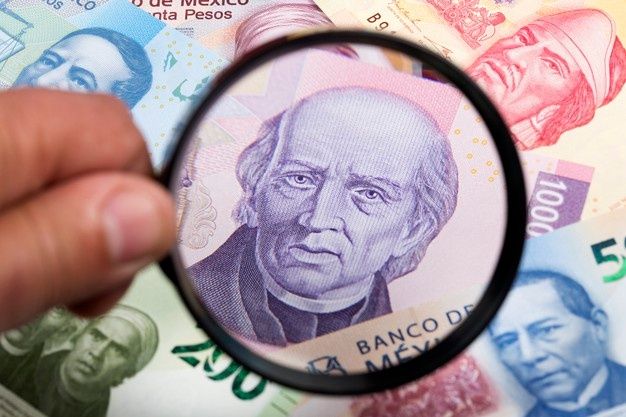The peso starts the session with a moderate depreciation of 0.32% or 3.4 cents, trading around 20.21 pesos per dollar, with the exchange rate touching a minimum of 20.1160 and a maximum of 20.2178 pesos.
The depreciation of the peso is in line with most currencies as the dollar strengthens 0.15% according to the weighted index.
In the wide basket of main crosses, only two currencies gain ground, the Turkish lira with 0.31% and the Russian ruble with 0.12 percent.
The peso
This is due to a decrease in risk appetite in financial markets due to two factors:
First factor
In the United States, health authorities recommended a pause in the use of the one-dose vaccine developed by Johnson & Johnson, after six cases related to blood clots were found after its application.
Although this will only slow down the vaccination process as research is carried out, the markets reacted negatively, since vaccination is closely related to the economic recovery process.
In the futures market, the main indices showed falls after the news, with the S&P 500 losing 0.29% before the open, while the Dow Jones fell 0.31 percent.
The Nasdaq index shows a moderate decline of 0.06%, as broadcasters in the technology sector have shown greater resilience to negative news associated with the Covid pandemic19.
Second factor
Inflation in the United States stood at an annual rate of 2.6% during March, above the market’s expectation of 2.5%, the highest level since August 2018.
In its monthly comparison, inflation was 0.6%, the highest monthly increase since August 2012, driven by energy prices, where gasoline prices increased 9.1% per month.
For its part, core inflation, which serves as a better indicator of the long-term inflation trend, was at an annual rate of 1.6%, after standing at 1.3% the previous month.
In its monthly comparison, the underlying component advanced 0.3%. It should be remembered that inflationary pressures tend to generate upward pressure on interest rates on government securities in the United States, which in turn reduces the attractiveness of holding portfolio investments in emerging economies.
Treasury bonds and the peso
In the bond market, the 10-year Treasury bond yield rate shows an increase of 1.4 basis points to 1.68%, while the 30-year bond rate rises 1.2 basis points to 2.34 percent.
Today at 12:00 hours in central Mexico, the result of the auction of 24 billion dollars in 30-year Treasury bonds will be announced in the United States, where the most relevant data to observe will be the number of times that the amount placed was demanded.
A significant decrease in this ratio could generate upward pressure on interest rates.
During the session, the exchange rate is expected to trade between 20.11 and 20.32 pesos per dollar.
The euro starts the session with a depreciation of 0.13%, trading at 1.1895 dollars per euro, while the pound loses 0.10% and is trading at 1.3727 dollars per pound.
Money market and debt
In the United States, the yield on the 10-year Treasury bonds increased by 1.4 basis points, at a rate of 1.68%, while in Mexico the yield on the 10-year M bonds remained unchanged at 6.66 percent.
Derivatives market and the peso
To hedge against a depreciation of the peso beyond 20.50 pesos per dollar, a purchase option (call), with an exercise date within 1 month has a premium of 1.55% and represents the right but not the obligation to buy dollars in the aforementioned level.
On the other hand, the interbank forward for sale is at 20.2546 at 1 month, 20.6007 at 6 months and 21.0699 pesos per dollar at one year.
Gabriela Siller; PhD
Director of Economic-Financial Analysis.
Banco BASE
![]()

